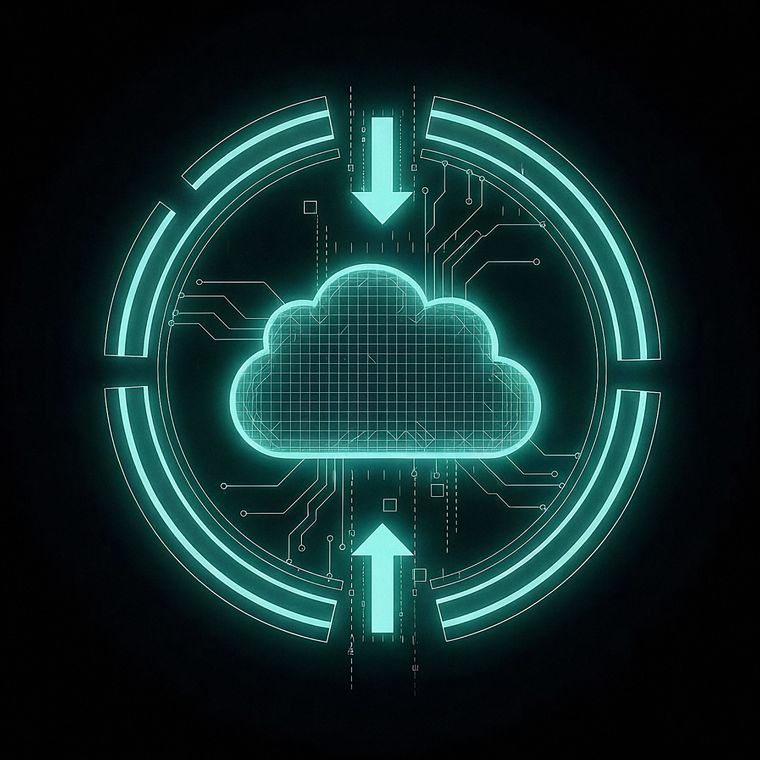From Tool Sprawl to Strategic Simplicity: The Case for Platformisation
Tool bloat is an easy win for hackers and a major integration headache for overstretched security teams. Platformisation could be the antidote to cyber complexity, closing the coverage gaps while dramatically easing the management of multiple security tools.
May 7, 2025

What is the biggest obstacle to your cyber security operations?
I've asked dozens of CISOs this question, and their answer is almost always the same: complexity.
According to IBM, the average organisation now juggles 83 different security solutions from 29 different vendors. Each tool may do its job well, but there's no avoiding the fact that every integration is a potential entry point for attackers. And adding more tools only increases the complexity and inefficiency that overstretched security teams just don’t need.
The Current State of Security is Untenable
It’s easy to see how tool sprawl can accumulate over time. Cyber threats are growing in scale and sophistication, with AI automating every phase of an attack lifecycle. Each new type of threat—whether related to cloud environments, IoT devices, or ransomware—invites another best-in-class tool to patch the vulnerability.
And expecting security teams to manage a hodgepodge of 60, 70, or 80+ point products isn’t sustainable—or secure.
Even if you're buying multiple tools from a single vendor, it doesn't mean they are integrated or work well together. Maintaining dozens of tools is a full-time job in itself, requiring substantial human oversight for governance, configurations, updates, and vendor management. Meanwhile, security teams are drowning in duplicated alerts and false positives—distracted from the real threats. And the risk of misconfiguration, which can quietly create dangerous coverage gaps, is enough to keep any CISO up at night.
In this fragmented environment, where teams receive hundreds of alerts from dozens of tools daily, CISOs aren’t asking for more dashboards or more noise. They want great detection efficacy inside a simple, streamlined solution that automates their triage before they involve a SOC analyst. In other words, they want platformisation.
The Value of Platformisation
The best-in-class versus platform debate isn’t new in cyber security. CISOs have long weighed the trade-off between highly specialised, highly customisable defences for specific threats—which often demand a small army to configure and manage—and broad-scope solutions that cover more ground, but may lack the depth of best-in-class tools.
The best security strategy is often a mix of both approaches. But the ever-growing array of point products—each with its own APIs, dashboards, data models, and training requirements—is nudging the conversation towards platformisation.
Here’s why:
Better Security
Platformised cyber security solutions are increasingly favoured because they offer the ultimate benefit: better security. By integrating multiple capabilities such as detection, triage automation, and response orchestration into a single system, platform solutions can eliminate the unavoidable security coverage gaps between standalone products.
Lower Total Cost of Ownership
Managing multiple solutions can quickly become an expensive headache—why pay twice for tools with overlapping features? Platform solutions typically reduce total cost of ownership by lowering licensing and procurement costs. The tools are also built to work together, so teams spend less time on maintenance and integration headaches.
One Abnormal client saw their SOC team churn drop dramatically—from 73% annually to 0% in just a year—simply by eliminating repetitive phishing triage and giving their team time to focus on higher-value work.
Training and Compliance Efficiency
Consider secure email gateways (SEGs): legacy tools that haven’t evolved in over a decade. SEGs can't prevent humans from being the weakest link in the security chain, which is why many providers have acquired security training platforms to educate users on recognising and reporting suspicious emails. In theory, it's a great idea; training equips employees to act as a second line of defence.
In practice, however, the two products are rarely integrated. In virtually every case, training has been reduced to a periodic pass/fail compliance exercise rather than an opportunity to proactively manage security risk. Just like fire drills, people don’t retain what they don’t use regularly.
But what if your users were being trained on the exact threats targeting your business, right when they happen, using real-time data to provide tailored training. Wouldn’t that be a more effective approach?
What to Consider for Effective Platformisation
If there is one thing you can’t do trivially, it is building or acquiring platforms. Deliberate thinking and selecting the right consolidation strategy will be crucial to your platformisation success.
Modern Architecture Matters
A platform ecosystem is only valuable if the whole is greater than the sum of its parts. The goal is to establish an environment where tools communicate natively, share data effortlessly, and cover a large part of your estate. This doesn’t happen by accident—it requires modern architecture, engineered from the ground up.
By design, a well-architected platform prioritises open standards and APIs, ensuring tools from different vendors work cohesively. But not every solution scales with your organisation’s needs. Some may limit extensibility or lock you into a system that’s difficult to evolve. A true platform should “just work”—now and in the future.
The alternative is an acquisition-built platform. This type of platform stitches together a patchwork of disparate tools—some legacy, some newer—tied together with a management console interface. It might look like a platform, but it doesn't operate like one. Legacy infrastructure can struggle with platform-based workflows, often leading to architectural compromises (such as additional network hops that increase latency or create disruptions if connections fail).
Choose Your Vendor Carefully
The risk of going all-in with one solutions ecosystem comes down to this: what happens if it’s breached? When everything is interconnected within one platform, a supply chain attack could spread and affect all your security operations.
Additionally, think about the sensitive data you’ll be sharing with this partner. Where does your data go? Are emails sent off-site for evaluation? Do third parties maintain logs or archives of those emails? Is the platform’s AI its own intellectual property, or is it a bolt-on technology from another vendor? How can you hold a third-party environment to the same compliance standards as your own?
Security should be at the heart of the platform—not an afterthought. So do your due diligence. Run the trials. Ask the hard questions. And choose a vendor you can trust.
Look for Built-In AI
Modern cyber security platforms increasingly integrate artificial intelligence as a key component, largely because AI excels at identifying cross-system patterns without human subjectivity. Take Abnormal's solution, for instance. It evaluates between 40,000 and 90,000 individual signals per email, spotting patterns with scale, consistency, and precision that humans simply can't match. It asks questions like, “Does this user usually communicate with this individual?” or “Is this language typical for them?” Anything that seems off is flagged and pulled automatically before it even touches your team's inbox.
Tellingly, addressing cyber security burnout is one of Gartner's top cyber security trends for 2025. When a SOC analyst spends 20 minutes on a single alert and is racking up hundreds of tickets daily, how long can we realistically expect them to last in that role? No one signs up for this field to become a red-eyed alert triager. AI is by far our best chance to refocus our teams on complex, high-priority threats.
Platforms are the Future of Cyber Security
Best-in-class tools will always have their place. But breaches don’t need a wide-open door—just a crack. And when security teams are stretched thin, subtle threats can go unnoticed. A unified platform, powered by well-designed AI, can close those gaps.
Even modest platform adoption delivers tangible value (greater threat detection, faster response times, compliance automation) and a welcome relief for any CISO.
Looking forward, one word will guide the future of platformisation: trust. As AI handles more data and decision-making, trust in your platform’s privacy, scalability, and security architecture becomes non-negotiable. The next big task for CISOs will be to validate and choose a platform partner they can trust—then scale their strategy through that partner to maximise the security advantage.
Interested in learning more about how Abnormal can protect your organization with AI? Schedule a demo today!
Related Posts
Get the Latest Email Security Insights
Subscribe to our newsletter to receive updates on the latest attacks and new trends in the email threat landscape.


